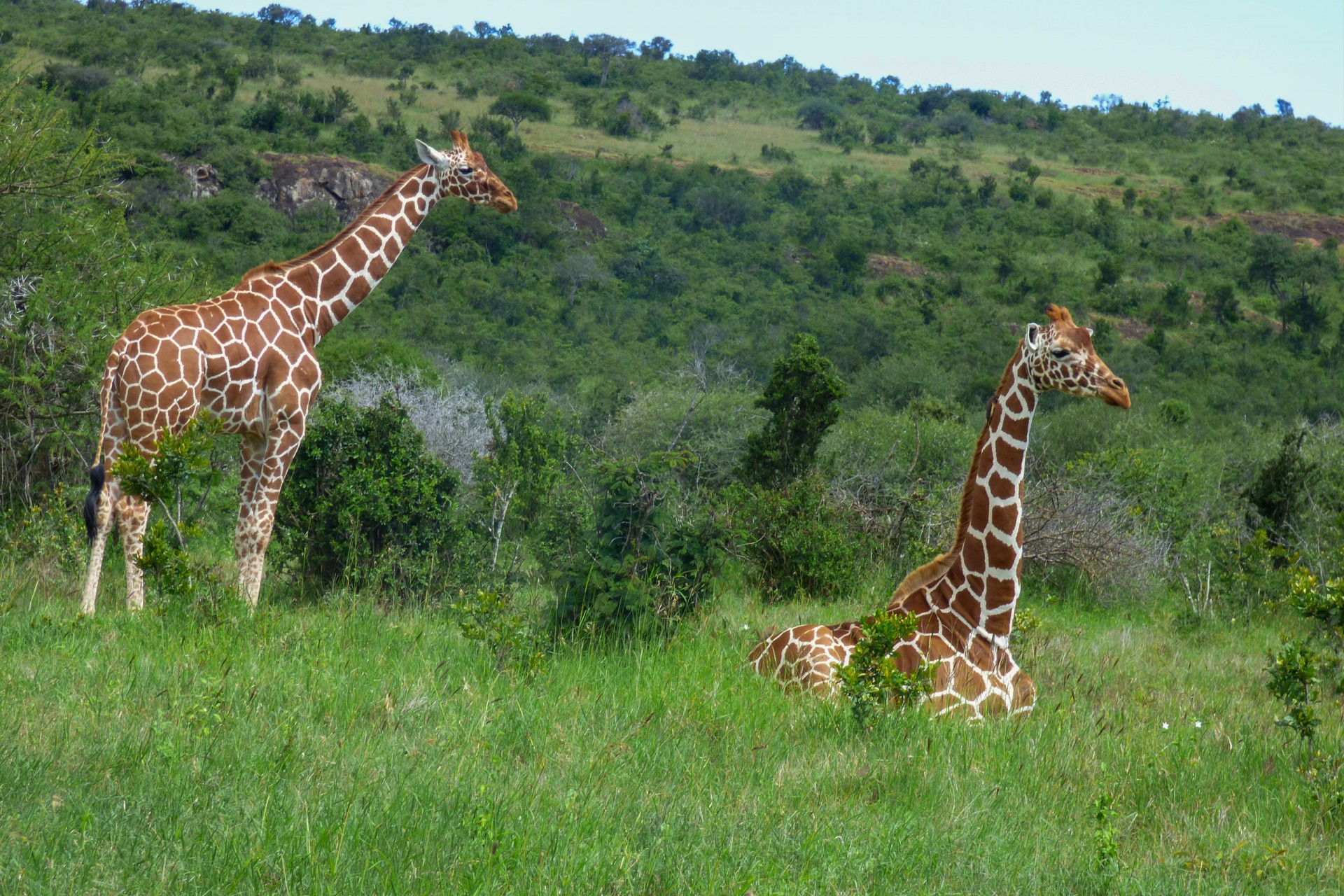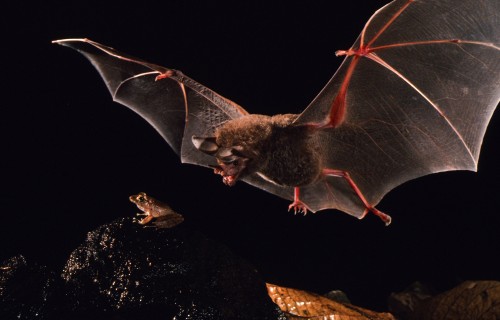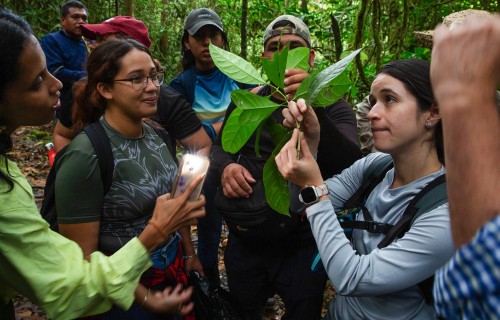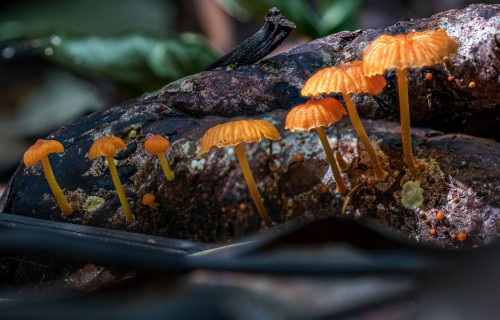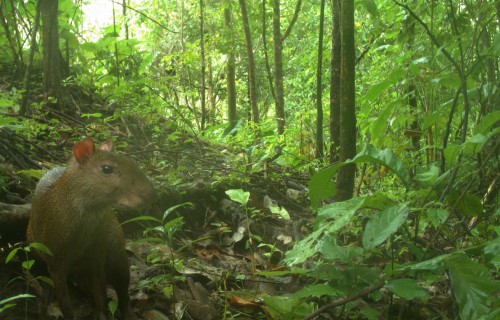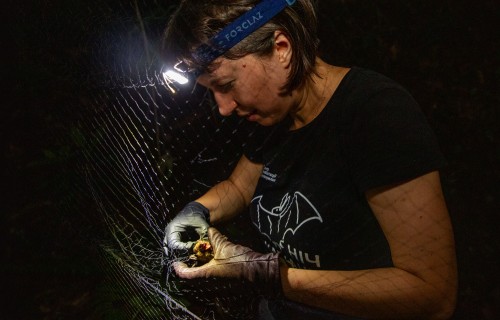How katydid songs expand
researchers’ knowledge of
tropical insects
Hungry
megaherbivores
How do Giraffes and Elephants alter the african savanna landscape?
Kenya, Africa
Through their foraging behavior across the diverse topography of the African savanna, megaherbivores may be unknowingly influencing the growth and survival of vegetation on valleys and plateaus, while preserving steep slopes as habitat refugia.
As they roam around the African savanna in search for food, giraffes and elephants alter the diversity and richness of its vegetation. By studying the foraging patterns of these megaherbivores across different terrains in a savanna in Kenya, scientists from the Smithsonian Tropical Research Institute (STRI) and collaborating institutions discovered that these large mammals prefer to eat their meals on flat ground, potentially impacting the growth and survival of plant species on even savanna landscapes, such as valleys and plateaus.
Megaherbivores are more concerned about eating as much food as possible while expending the minimum amount of effort, than about avoiding potential predators. Elephants may consume as much as 600 pounds of vegetation in a day; giraffes, about 75. This drove scientists to wonder about the impact of these megaherbivores on vegetation across a range of landscapes in the savanna.
Elephants may consume as much as 600 pounds of vegetation in a day, potentially impacting the growth and survival of plant species in the African savanna.Credit: Duncan Kimuyu.
“Previous studies have demonstrated that megaherbivores adjust their movement patterns to avoid costly mountaineering,” said co-author David Kenfack, STRI staff scientist, coordinator of the ForestGEO network forest monitoring plots in Africa and recently elected Fellow of the African Academy of Sciences. “We wanted to know the extent to which fine-scale variations in topography may influence browsing damage by these charismatic megaherbivores and evaluate whether seasonal shortages in food availability would force the megaherbivores to venture into areas with rugged terrain.”
Their observations¾conducted within a 120-hectare Smithsonian ForestGEO long-term vegetation monitoring plot located at Mpala Research Center in Kenya¾confirmed that giraffes and elephants prefer flat ground while foraging. They compared the damage on Acacia mellifera trees, which grow all over the savanna landscape and are a common meal for megaherbivores. They found that the trees growing on steep slopes were taller and had fewer stems than those in valleys and plateaus, suggesting that elephant and giraffes tend to avoid feeding in these less accessible habitats.
This behavior did not change during the dry season, when resources become scarce, indicating that these two species would rather disperse to new areas with more favorable conditions than climb up a nearby slope to feed.
David Kenfack, STRI staff scientist, coordinator of the ForestGEO network forest monitoring plots in Africa and co-author of the study was recently elected Fellow of the African Academy of Sciences.
For the authors, these feeding patterns may help preserve steep slopes as habitat refugia, with a greater diversity and density of vegetation than more frequently visited areas. Their findings support this argument: the number and variety of trees encountered on the steep slopes was higher than in the valleys and plateaus.
“This study has broadened our understanding of the role of topography in explaining diversity patterns of plants,” said Duncan Kimuyu, a Smithsonian Mpala postdoctoral fellow, lecturer at Karatina University in Kenya and main author of the study. “Further research is warranted to understand how other factors such as differences in soil properties may interact with topography and megaherbivores to influence the growth and survival of vegetation in the African savanna.”
Kimuyu, D.M., Kenfack, D., Mutuku, P.M., Ang’ila, R.O. (2020). Fine-scale habitat heterogeneity influences browsing damage by elephant and giraffe. Biotropica. https://doi.org/10.1111/btp.12848


